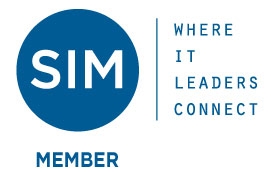 [There is far too much simple truth in Lou Adler’s guidance for talent evaluation and hiring, to not continually evangelize it. Our ‘Job Specification Grid’ tries to operationalize what he so eloquently writes in a list.]
[There is far too much simple truth in Lou Adler’s guidance for talent evaluation and hiring, to not continually evangelize it. Our ‘Job Specification Grid’ tries to operationalize what he so eloquently writes in a list.]
To be 20% better, all you have to do is be more efficient doing what you’re now doing. To be 100% better you have to start over.
According to the U.S. Department of Labor, 280 thousand jobs were filled in May 2015. Sadly, according to the Gallup Group, 70% will be disengaged within six months. This seems like a pretty screwed up situation to me.
This past month I spoke with hiring managers in the pharmaceutical, insurance, gaming, social media, hospitality, advertising, software and data analytics industries. They all complained about the same things. Most needed to see at least 6-8 candidates before making a hiring decision. They were dissatisfied with their recruiters and HR departments and were unhappy with the quality of the candidates they were seeing and hiring.
I told them all of these problems were their fault.
Then I said there is a solution. But it isn’t about being 20% better at hiring, it’s about being 100% better. To be 20% better, all you have to do is be more efficient doing what you’re now doing. To be 100% better you have to start over. Given this premise, here are some ideas on how to start over.
The Power of 10 Ideas for Making the Hiring Process 100% Better
- Ignore those who won’t throw away their old habits. Doing the wrong things faster will just screw things up tighter. Process redesign is the key to better hiring, not process efficiency.
- Challenge hiring managers to eliminate the use of discriminatory hiring tools. Rather than relying on ill-defined jobs and skills-laden job descriptions, ask hiring managers to define the actual work a successful person needs to do to be successful. Defining real job needs has been shown to be the number one predictor of on-the-job performance and increased engagement, job satisfaction and motivation.
- Benchmark the internal promotional program for hiring people from the outside. By definition, people who are promoted into bigger jobs based on their past performance have less skills and experiences than listed on the typical job description. Why not assess outside people the same way based on their past performance in comparison to the performance requirements of the job? (Just ask these two questions to figure this out.)
- Have hiring managers prepare 2–minute videos describing why their job represents a career opportunity. Forget traditional job postings. Instead drive potential candidates to the video and if they’re interested ask them to apply using a non-resume.
- Have candidates prepare a 3-minute video of their unique expertise. This is a non-resume idea that could be used to get non-traditional and semi-interested passive candidates into your prospect pool. To standardize the responses ask those interested to describe their most significant accomplishment related to some critical job need.
- Redesign the apply button. In a recent post I suggested making the apply button easier to find but harder to push. The idea was to slow the process down, convert strangers into acquaintances and focus on past performance doing comparable work as the criteria for moving forward.
- Don’t let anyone unqualified apply to a job. First change the definition of “qualified” to “those who have done comparable work.” (See Point 2 above.) This change opens up the pool to a different and more diverse group of performance-qualified people. Then use a video, non-resume and bigger apply button to screen people in, not out.
- Reengineer the job board thinking attract-in vs. weed out. Rather than emphasize must-haves describe what the person will do and learn and could become if successful. This will attract a new type of candidate – those who are looking for career opportunities, not lateral transfers.
- Make hiring managers responsible for hiring top talent. Despite the lofty goal of talent is #1, as far as I’m concerned if hiring managers aren’t evaluated and rewarded based on the quality of people they hire, hiring top talent is just talk. Here’s are 10 things you can do to get hiring managers to take ownership of the hiring process.
- Insert a high potential override switch into the process. Even if hiring managers are held responsible for hiring, they will often focus more on their personal short-term needs rather than the long-term company objective of hiring for potential. In this case a few senior leaders need to be able to veto short-term hiring decisions.
- Stop using behavioral interviewing and competency models. These are the problem not the solution. (Review point one if anyone disagrees.) Instead ask the most significant accomplishment question for each performance objective in the performance-based job description. (I know this is #11, but consider it a bonus idea.)
There’s too much short-term thinking involved in hiring people for the long term. The solution starts by defining the real work that needs to done; finding and hiring people based on what they can do, learn and become, not what they have; and making hiring managers personally responsible for fielding a great team. If this is not their number one performance objective, hiring top talent is not number one at your company. And making it number one is not about doing it faster, it’s about doing it differently.
Lou Adler (@LouA) is the CEO of The Adler Group, a consulting and training firm helping companies implement Performance-based Hiring. He’s also a regular columnist for Inc. Magazine and BusinessInsider. His latest book, The Essential Guide for Hiring & Getting Hired (Workbench, 2013), provides hands-on advice for job-seekers, hiring managers and recruiters on how to find the best job and hire the best people. His new video program provides job seekers inside secrets on what it takes to get a job in the hidden job market.













Comments are closed.